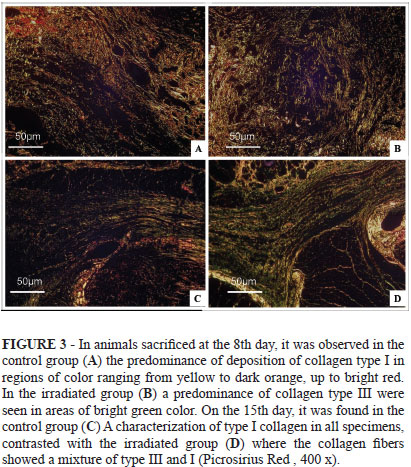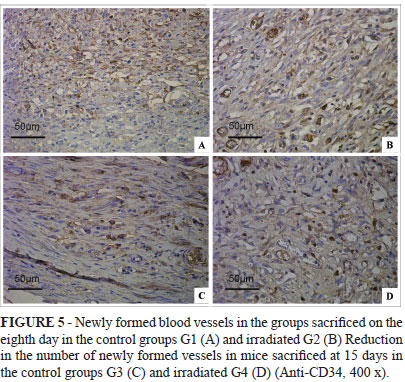PURPOSE: To evaluate the effect of low-level laser therapy (LLLT) ë904 nm on healing of surgical wounds in rats. METHODS: Forty male Wistar rats were used, divided into four groups, underwent incision along the lines Alba covering skin, subcutaneous and muscle abdominal, sutured continuously for nylon 5-0. Eight and fifteen days after the surgery process, the repairing area was removed and histological sections were stained with hematoxylin-eosin to assess cellularity inflammatory, Masson's Trichrome and Picrossirus to quantify the collagen fibers and immunohistochemical technique for counting newly formed vessels. The data were compared statistically using analysis of variance ANOVA, with a "post-hoc Tukey test, p <0.05. RESULTS: Low-level laser therapy reduced the intensity of the inflammatory reaction and influenced the dynamic of the immunoinflammatory response by inducing switching of the leukocyte infiltration pattern (neutrophilic to lymphoplasmacytic infiltration). Also stimulate the deposition and enhance the organization of collagen fibers, featuring a delicate collagen type III. Furthermore, it appeared to a significant increase in the average number of newly formed vessels (p = 0.00 and p = 0.02, respectively). CONCLUSION: Low-level laser therapy resulted in modulate of the inflammatory response, enhanced deposition of collagen fibers and increase in the average number of newly formed vessels.
Wound Healing; Lasers, Semiconductor; Collagen; Macrophages; Rats









